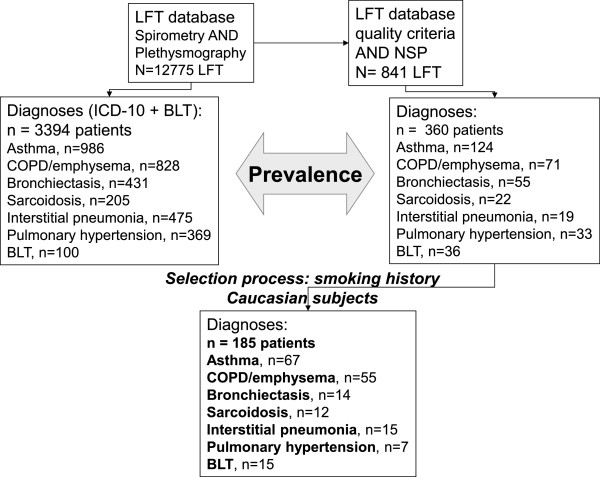Figure 1.

Selection of the patients and prevalence estimation. LFT: lung function tests; NSP: Non Specific Pattern; COPD: chronic obstructive pulmonary disease; BLT: bilateral lung transplantation (that was identified in the Clinical Database Warehouse by a specific CCAM code). PY: Pack-years for smoking history. The process of data selection is described in the Methods section. On the right side of the flow-chart diagram, the selection process of the 185 patients with NSP described in Table 2 is showed. The first step allowed the selection of patients instead of LFT (from 841 LFT to 360 patients): 30 patients with miscellaneous diseases (see Methods) were excluded, and 360 patients were selected (451 tests were follow-up LFT). All these 360 patients had the “NSP” diagnosis selected by the physician in charge of the medical report, based on the results of LFT showing the predicted value of each parameter and their 5th percentile (95th percentile for absolute lung volumes, additionally) based on normative equations for spirometry and lung volumes with correction for ethnicity [13, 14]. Consequently, the prevalence of NSP in each lung disease was calculated from this sample. The next step was conducted to describe lung function test results from a highly selected subgroup with indisputable diagnoses. For the purpose of the study a more recent Caucasian set of predicted values for spirometry was used [12] allowing the calculation of Z-scores. After the exclusion of non Caucasian subjects and patients with a smoking history ≥ 15 pack-year for non COPD/emphysema diagnoses, 185 / 360 patients were available for the final description.
